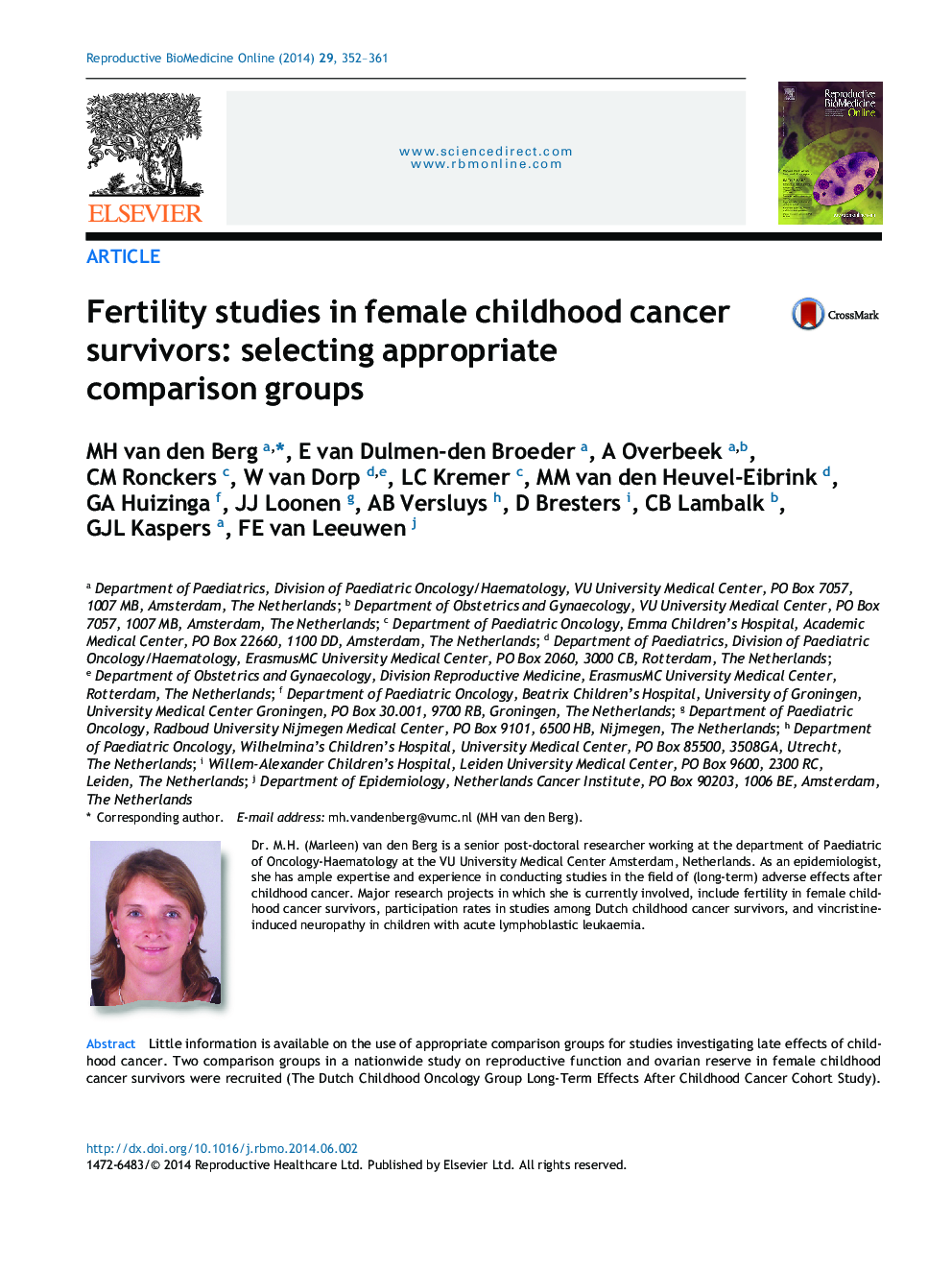| Article ID | Journal | Published Year | Pages | File Type |
|---|---|---|---|---|
| 3970125 | Reproductive BioMedicine Online | 2014 | 10 Pages |
Little information is available on the use of appropriate comparison groups for studies investigating late effects of childhood cancer. Two comparison groups in a nationwide study on reproductive function and ovarian reserve in female childhood cancer survivors were recruited (The Dutch Childhood Oncology Group Long-Term Effects After Childhood Cancer Cohort Study). Experiences of this process are reported. Two types of comparison groups were used: sisters of participating survivors and controls from the general population. A total of 352 out of 580 (61%) of the participating survivors who had a sister gave permission to invite them for the study. The participation rate of sisters was much higher than control participants from the general population (74% versus 21%, respectively), whereas considerably more effort was involved in recruiting controls from the general population. Participants in this group were significantly older and more highly educated than sister controls (P < 0.001 for both groups). No significant differences were observed between both types of comparison groups in several fertility-related characteristics, suggesting minimal bias owing to selective participation. Researchers setting up a study to investigate late effects among survivors of childhood cancer should carefully consider the advantages and disadvantages of using various types of comparison groups.
